It’s 2025, and some people still don’t know how to find keywords for building a website. It’s not mysterious—just like opening a restaurant starts with knowing what customers want to eat, building a website starts with understanding what users are searching for. Today, let’s talk about how beginners can find and select keywords—and learn a repeatable skillset you can actually use.
Why a Keyword Strategy Matters
You might wonder: “I’m just publishing content—why complicate things with keywords?”
Simple: no matter how good your site is, it’s wasted if no one can find it. Keywords are the bridge between users and your site. Every query people type into Google or Baidu expresses a need. If your pages show up near the top, traffic will follow.
More importantly, a solid keyword strategy brings not just traffic—but qualified traffic. What’s qualified traffic? Visitors who actually care about your content and can convert into customers. For example, someone searching “yoga classes in Beijing” is far more likely to enroll than someone searching “yoga.”
Even better, many valuable keywords last far longer than you think. Create a page that genuinely meets a need, and it can keep bringing traffic 5–10 years later. That’s the dream of “build a site that pays you back for years.”
Get the Basics Right: Keywords, Hot Topics, and Long-Tails
Before you start finding terms, make sure you understand a few essentials. You’ve probably heard these labels, but clarity on differences and use-cases is key.
Core Keywords (Short-Tails)
These are fundamental terms—usually one or two words: “SEO,” “coffee,” “marketing.”
They tend to have huge search volumes—but fierce competition. Think how many people want to rank #1 for “SEO”: big companies, old domains, everyone. Also, user intent is fuzzy: they might want to learn SEO, buy SEO services, or just browse.
Suitable use: optimize your homepage and major category pages to establish baseline authority. For beginners, don’t start by slugging it out for these.
Long-Tail Keywords
This is the beginner’s best friend. Long-tails are 3+ words—more specific and detailed. Examples: “best coffee maker for small office,” “how to do keyword research for SEO.”
Long-tails shine because: lower volume (maybe dozens to hundreds per day), lower competition (fewer people targeting them), clearer intent (users know what they want), and higher conversion (because intent is clear).
You might ask: “If the volume is small, is it worth it?” It’s a math play. One long-tail might have 50 daily searches, but if you target 100 long-tails, that’s 5,000 daily searches. And that traffic is highly qualified.
Suitable use: content pages and product detail pages. Ideal for beginners.
Hot Topics (Trending Keywords)
These are spikes—terms that surge in specific windows: “2026 calendar,” “iPhone 16 release date,” “chatgpt 5.”
They’re volatile: hot this month, cold next. Some are cyclical (e.g., “black friday deals,” “tax filing deadline”).
Suitable use: great for news/information sites. Just be timely—ship content while the trend is rising. If you jump in after everyone else, you’re late.
Intent-Based Categories
Another helpful lens: user search intent.
- Informational: users seek knowledge/answers. Examples: “how to make cold brew coffee,” “what is SEO.” SERPs favor blog posts and tutorials. Good for content marketing and authority.
- Transactional: users intend to buy or use services. Examples: “buy iPhone 15 pro,” “SEO services pricing.” SERPs favor ecommerce and product pages. Highest conversion, strong commercial value.
- Navigational: users want a specific site/brand. Examples: “ahrefs login,” “google search console.” Important for brand defense.
8 Practical Methods to Find Keywords
Now the core question: how do you discover keywords worth doing? Here are eight field-tested methods.。
Method 1: Google Autocomplete Mining
The simplest and most effective. Type your core term into Google and pause—don’t press Enter. Look at the suggestions.
Type “coffee maker,” and you might see:
- coffee maker with grinder
- coffee maker reviews
- coffee maker walmart
- coffee maker amazon
- coffee maker single serve
These are real queries, prioritized roughly by popularity. Top suggestions usually have higher search volumes.
Pro tip: don’t just type the full word—add a space and letters to branch suggestions. Try “SEO ” then “SEO a,” “SEO b,” … all the way to “SEO z” to surface tons of related phrases.
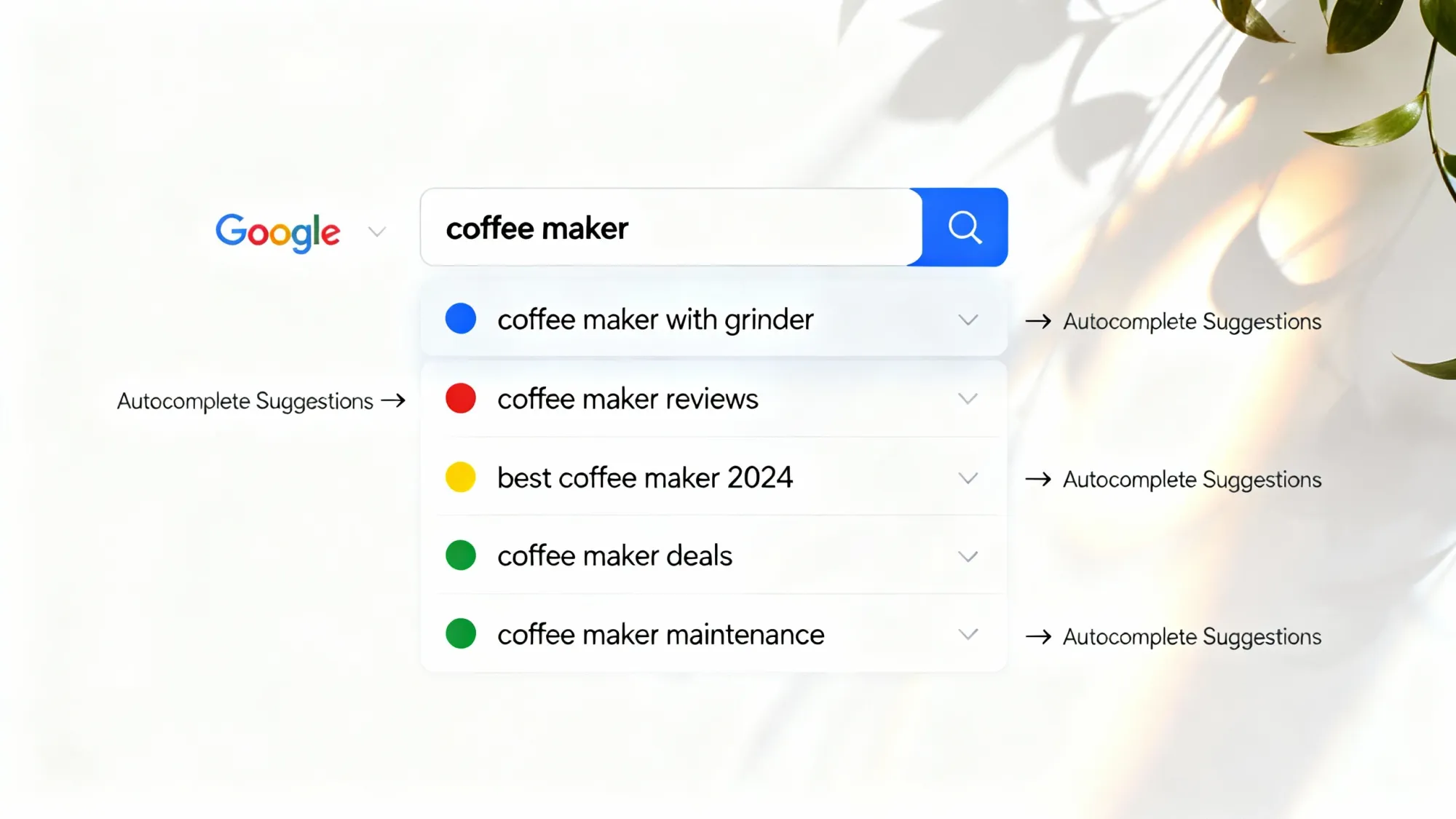
Figure 1: Example of Google search dropdown suggestions - After entering keywords, relevant terms that users have actually searched for are automatically displayed
Method 2: “Related Searches” at the Bottom of SERPs
Search a term and scroll to the bottom—you’ll see the “Related searches” section.
Google recommends these based on user behavior. They’re connected to your seed keyword but may express needs from different angles.
Search “keyword research,” and you might see:
- keyword research tool
- how to do keyword research
- free keyword research
- keyword research for SEO
Each could be a potential page topic.
Method 3: Competitor Keyword Analysis
This is the most straightforward leverage. Competitors already rank—so you can learn from what works.
Steps:
- Search your seed term and note the top 10 ranking sites.
- Pick several similar-sized sites (avoid giants you can’t compete with).
- Plug their domains into Ahrefs or Semrush.
- Review all the keywords they rank for.
- Filter by acceptable search volume and competition.
Upside: these terms are validated—they have demand and traffic.
Method 4: Site Search Data (On-Site Search)
If you already have some traffic, your internal search is a goldmine.
Use Google Analytics or your CMS to see what users search on your site. These queries are valuable because:
- Users arrived but couldn’t find what they needed.
- Making pages for these terms fills content gaps.
- They often convert well—users already know your site.
Practical: review monthly; list terms with 10+ searches that lack content on your site; prioritize them.
Method 5: Google Search Console Opportunity Mining
If you’ve connected Google Search Console (it’s free—you should), you’re sitting on a gold mountain.
GSC shows:
- all keywords your site already ranks for,
- average position, impressions, clicks,
- terms with potential that you haven’t fully tapped.
Gold zone: focus on keywords ranking between positions 11–20. You’ve laid foundation—small improvements can push them to page one. Much more efficient than starting from zero.
Also watch “high impressions, low clicks.” If a term gets 1,000 daily impressions but only 10 clicks, your title/description may be unappealing—optimize for CTR and watch clicks jump.
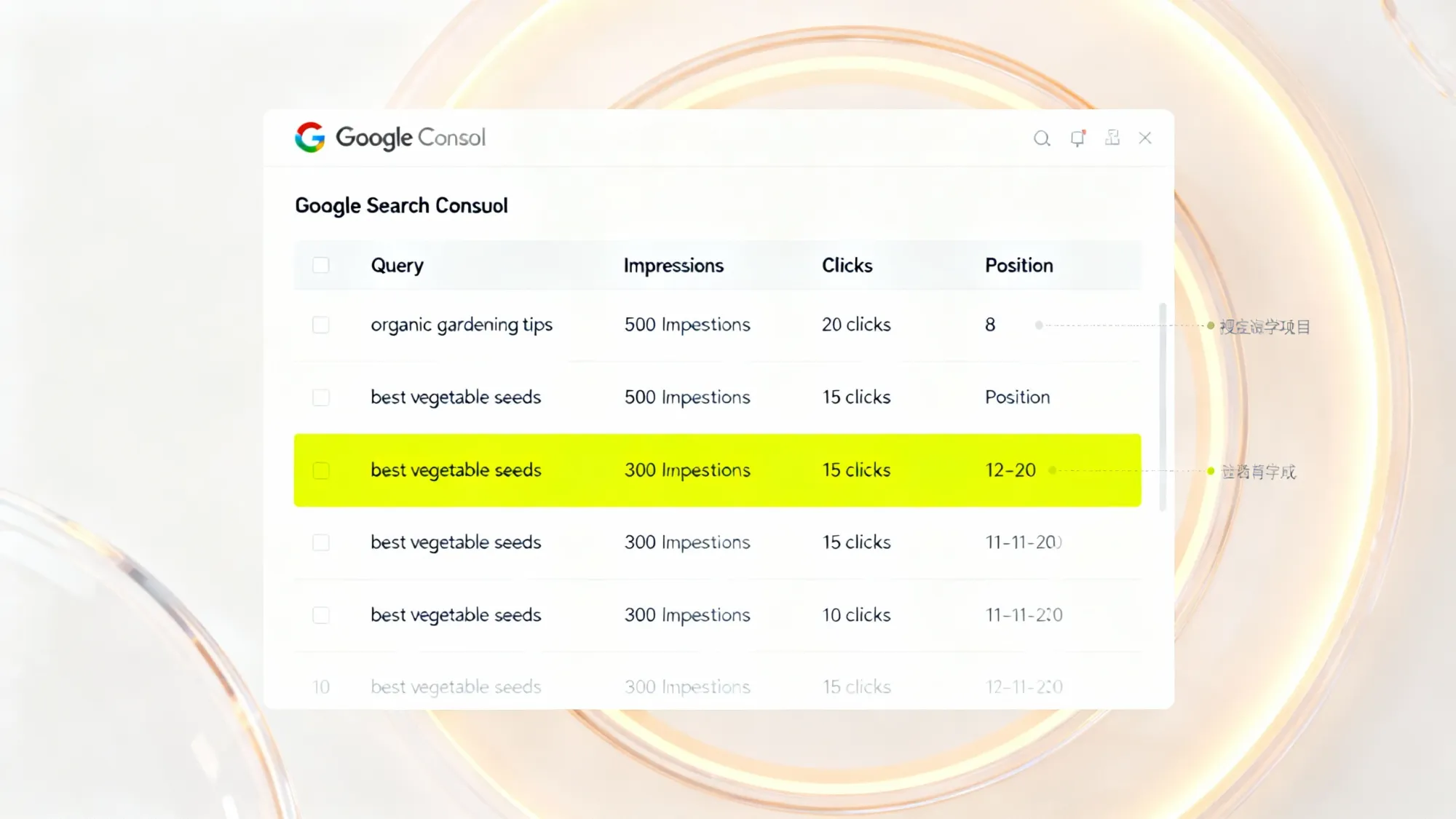
Figure 2: Keyword data in Google Search Console - focusing on keywords ranked 11-20 (highlighted in yellow), which are opportunity keywords with the most optimization potential
Method 6: Keyword Expansion Tools
Professional SEO tools offer keyword expansion. Input a seed keyword, and get hundreds/thousands of related terms.
Example: type “coffee” into Ahrefs Keywords Explorer and get:
- coffee maker
- coffee beans
- cold brew coffee
- best coffee brands… even tens of thousands more.
Practical filtering:
- Don’t stare at the whole list—you’ll drown.
- Filter by volume, e.g., monthly 100–1,000.
- Filter by keyword difficulty (KD), e.g., KD < 30.
- Manually review for business relevance.
Method 7: Question-Based Keywords
Many users ask questions directly. These often start with “how to,” “what is,” “why,” “when.”
Benefits:
- very clear intent,
- perfect for tutorials and explanatory content,
- more likely to win Featured Snippets,
- solid conversion.
How to find:
- Use “Questions” filters in keyword tools.
- Type “how to + your seed term” and check autocomplete.
- Explore Quora/Reddit to see what people ask.
If you’re in SEO, examples:
- how to do keyword research?
- what is long tail keyword?
- how long does SEO take?
- why is my website not ranking?
Method 8: Forums and Communities
Go where your audience hangs out. Watch what they discuss and care about.
Where:
- Relevant subreddits (e.g., r/SEO, r/entrepreneur),
- Facebook groups,
- Discussions on X (Twitter),
- Industry forums,
- LinkedIn groups.
How:
- Browse top posts to see recurring themes.
- Note phrasing—users often avoid jargon.
- Identify repeated questions and pain points.
- Convert those into keywords.
Example: if many founders ask “how to build a website without coding,” you can create content targeting “no code website builder,” “website builder for beginners,” etc.
How to Choose: What Makes a Keyword Worth Doing
You’ll find lots of keywords—but you can’t do them all. Filter using four evaluation dimensions.
Dimension 1: Traffic Potential
Start by estimating traffic—but don’t only look at volume.
- Search Volume: baseline metric. Note that tools vary (Google Keyword Planner, Ahrefs, Semrush).
- Actual Traffic Potential: more important. Some terms show 5,000 monthly searches, but the #1 page gets 1,000 visits due to ads or instant answers in SERPs. Ahrefs’ “Traffic Potential” is built for this.
- Seasonality: use Google Trends. Is volume stable or volatile? “Christmas gifts” spikes in Nov–Dec, then collapses.
Beginner tip: target monthly volume 100–1,000. Too small isn’t meaningful; too large is often too competitive. Build site authority first, then go after bigger terms.
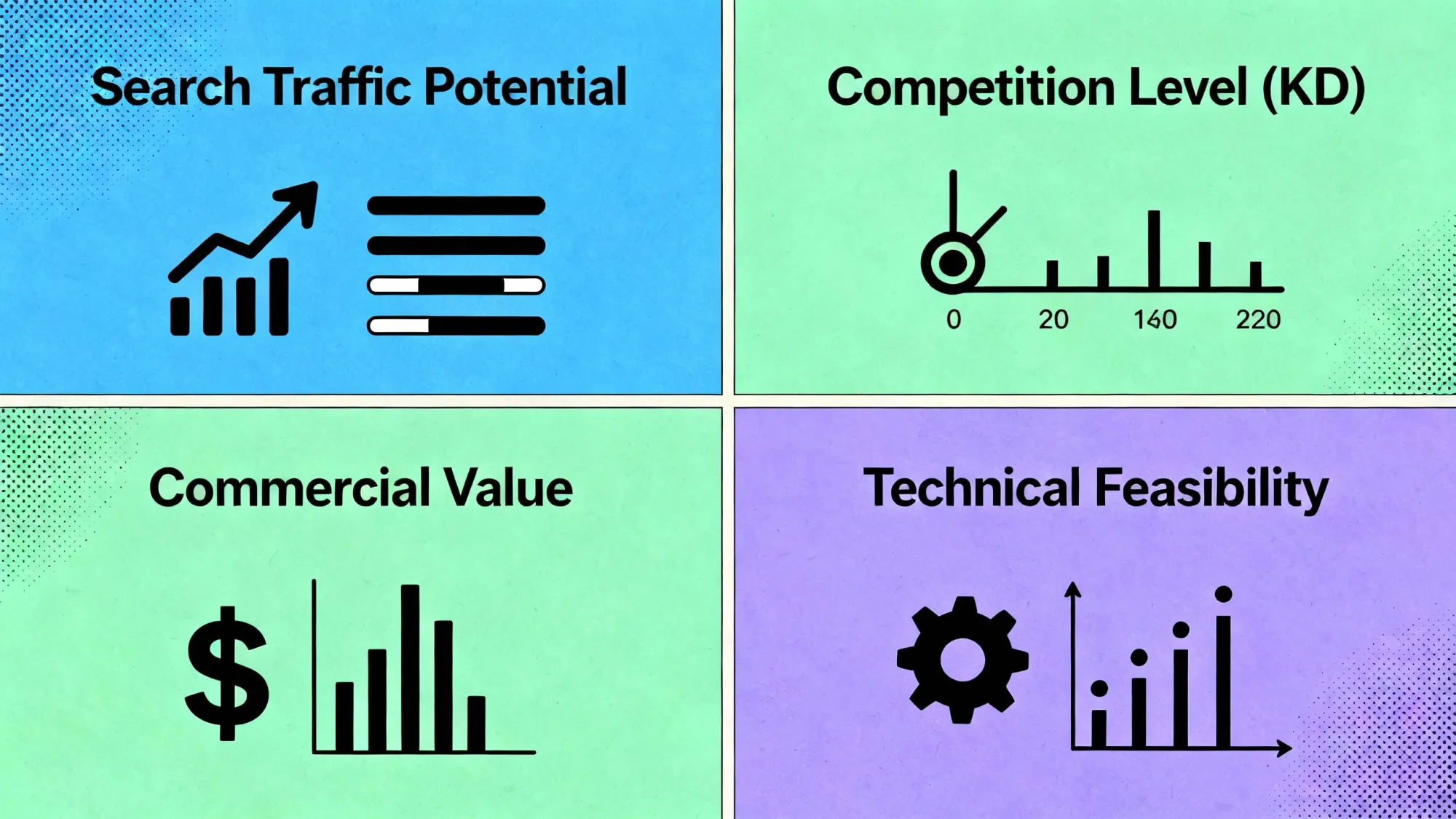
Figure 3: Four evaluation dimensions for keyword selection - search traffic potential, competitiveness, commercial value, and technical feasibility. Only by considering these comprehensively can the best keywords be chosen
Dimension 2: Competition
Great terms are meaningless if you can’t rank.
- Keyword Difficulty (KD): Ahrefs/Semrush score from 0–100. Rough guide:
- KD 0–10: very easy—new sites can rank quickly.
- KD 10–30: relatively easy—good for beginners.
- KD 30–50: moderate—requires some authority.
- KD 50–70: hard—suits stronger sites.
- KD 70+: very hard—requires strong authority and links.
- Competitor Check: search the term and review the top 10 sites. If they’re all giant portals, government sites, Wikipedia, your odds are slim. If you see personal blogs and SMEs, there’s a shot.
- Result Count: not perfect, but indicative. Fewer than 1 million results suggests lower competition.
Beginner tip: focus on KD < 30. Don’t chase mega-terms out of the gate.
Dimension 3: Commercial Value
Traffic doesn’t equal revenue. Some terms bring money; others just draw crowds.
- Intent Match: does the term align with your business goals? If you sell SEO tools, “best SEO tools” is more valuable than “what is SEO.” The former signals buying intent.
- CPC Signal: check Google Ads CPC. Higher CPC implies higher commercial value. “SEO services” might be $20 per click vs. “SEO tutorial” at $2.
- Conversion Potential: how likely is a visitor to convert? Long-tails and transactional terms usually convert better.
Beginner tip: don’t just chase volume. A term with 50 daily searches and 10% conversion can beat one with 1,000 daily searches and 0.1% conversion.
Dimension 4: Technical Feasibility
Often overlooked—but critical.
- Content Capability: can you create high-quality content that matches intent? For medical topics, authority matters—you need expertise.
- Resource Requirements: some terms require a 5,000-word deep-dive, multiple images, maybe video. Do you have the bandwidth?
- Site Authority Fit: new sites rarely win big-head terms. Start with lower competition, accumulate authority, then level up. Think RPG progression—don’t rush the final boss.
Beginner tip: pick terms you can execute well. Ten high-quality long-tail pages beat one mediocre piece on a hot term.
The Real Key: Decoding Search Intent
Finding the right term isn’t enough—you must understand what users actually want when they search it. As emphasized repeatedly: give users exactly what they want.
Two Ways to Judge Intent
- Method 1: Search and ObserveType the keyword into Google and look at page-one results:
- Mostly blog posts/tutorials? Users want information (informational).
- Mostly ecommerce/product pages? Users want to buy (transactional).
- Mostly online tools? Users want functionality (tool/functional).
- Mostly videos? Users want media (video).
You don’t need all 10—just a handful will tell you. Google’s algorithm already surfaces what matches intent.
- Method 2: Ask AIIf you’re unsure, ask GPT/Claude: “What do users want when they search ‘xxx’?” AI can outline needs, intents, and content types. Use it as a reference—but verify by checking real SERPs.
Match Page Type to Intent
This is where many beginners go wrong—everything becomes a blog post.
- If users want a tool, build a tool page.The “bad time simulator” example is classic. Searchers want to play the game immediately. A “what is bad time simulator” article won’t win. An interactive, playable page will.
- If users want information, write content pages.For “how to do keyword research,” users want a detailed tutorial.
- If users want a product, build product pages.For “buy yoga mat,” show products and purchase options.
- If users want a file, provide download/preview.For “2026 calendar pdf download,” give a straightforward download page.
Bottom line: stop defaulting to blog posts. Match the page type to user intent.
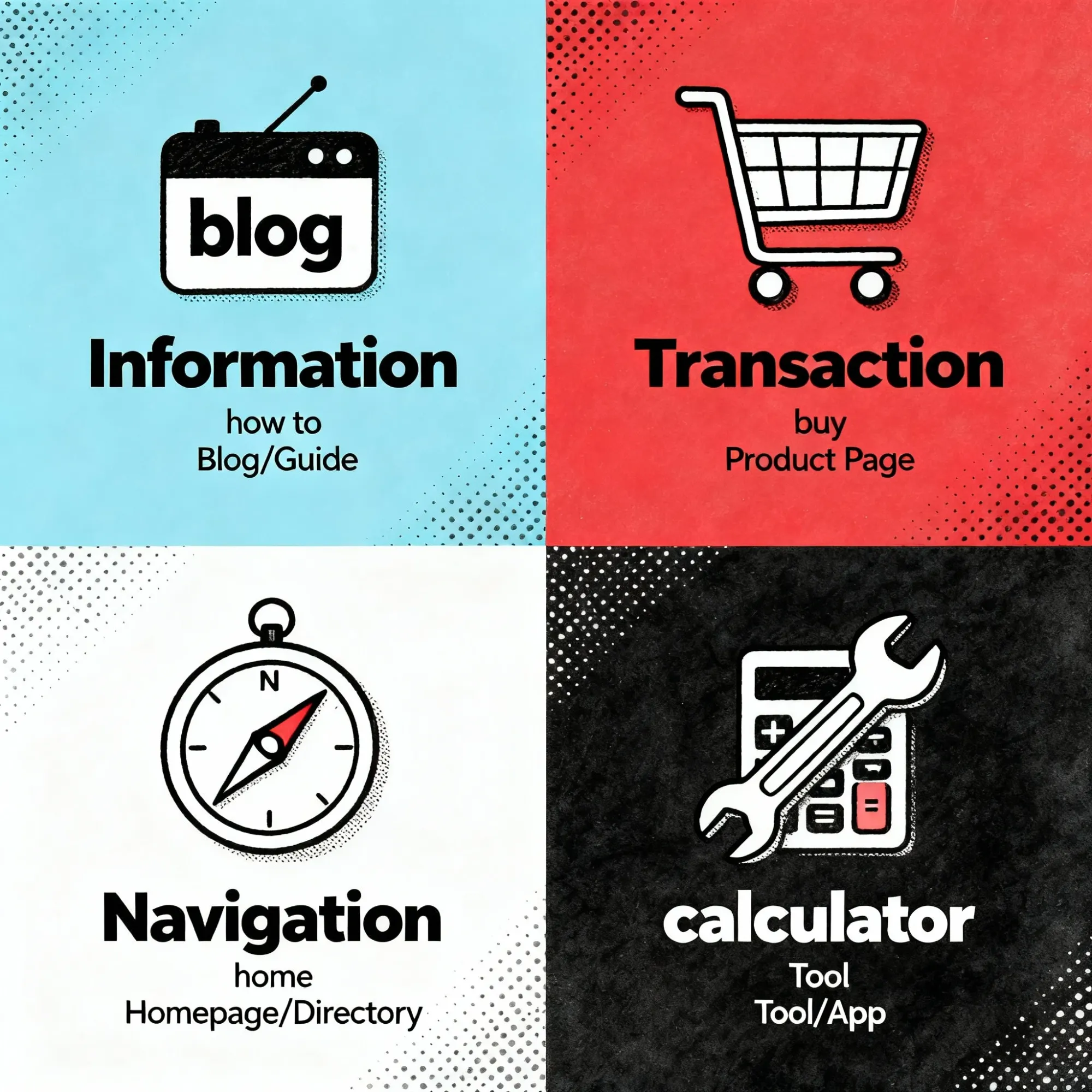
Figure 4: Four Search Intent Types and Matching Page Types - Create the Page That Matches What the User Wants
Tools and Practical Tips
You need the right tools.
Free Tools (Beginner Must-Haves)
- Google Search ConsolePrice: free. Use: see existing rankings, CTR, impressions. Tip: mandatory—check weekly and optimize terms in positions 11–20.
- Google Keyword PlannerPrice: free with a Google Ads account. Use: volume estimates, competition, CPC. Caveat: shows ranges without active ads (e.g., 1,000–10,000), not exact numbers.
- Google TrendsPrice: free. Use: track trend changes, seasonality, and geography. Great for assessing whether a hot topic is worth doing and spotting rising terms.
Value Option
- • UbersuggestPrice: from $12/month, with a limited free tier. Pros: simple, affordable, beginner-friendly. Features: keyword research, competitor analysis, content ideas. Good for budget-conscious indie operators.
Professional Tools
- Ahrefs Price: from $99/month. Pros: massive database, accurate KD, strong backlink analysis. Core: Keywords Explorer, Site Explorer, Content Explorer. Tip: use Traffic Potential over raw volume to judge keyword value.
- Semrush Price: from $129.95/month. Pros: comprehensive suite—beyond keywords (audits, competitor analysis, etc.). Core: Keyword Magic Tool (generate tens of thousands from a seed), Keyword Gap (find terms competitors have but you don’t). Tip: analyze 3–5 competitors with Keyword Gap to surface opportunity terms.
Tool Recommendations by Stage
- Just starting (0–3 months): free tools are enough—GSC + Keyword Planner + Trends, plus manual SERP research.
- Some experience (3–6 months): consider Ubersuggest ($12/month) to speed up work.
- Committed to SEO (6+ months): go with Ahrefs or Semrush. Worth the investment—improves research efficiency and decision quality.
A Practical Case: From Keyword Discovery to Ranking
Let’s walk through a complete real-world flow, based on the example mentioned above.
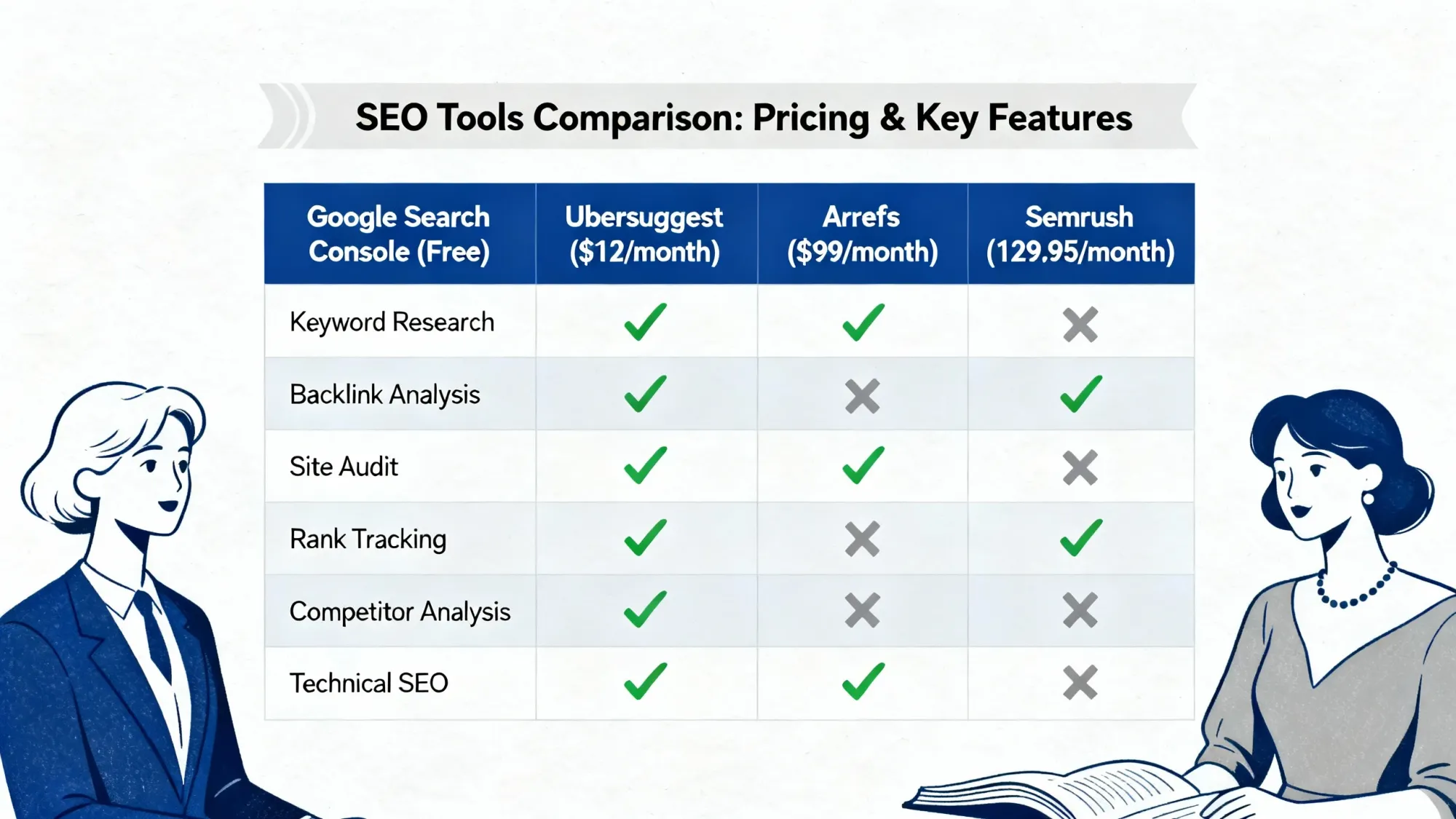
Figure 6: Keyword SEO Tool Comparison - From free tools to professional-grade tools, choose the right tool based on your stage and budget
Scenario
You’re building a mini-game aggregator site to acquire free traffic via SEO.
Step 1: Find Seed Keywords
Type “simulator” into Google and explore autocomplete and SERPs. You discover: “bad time simulator.”
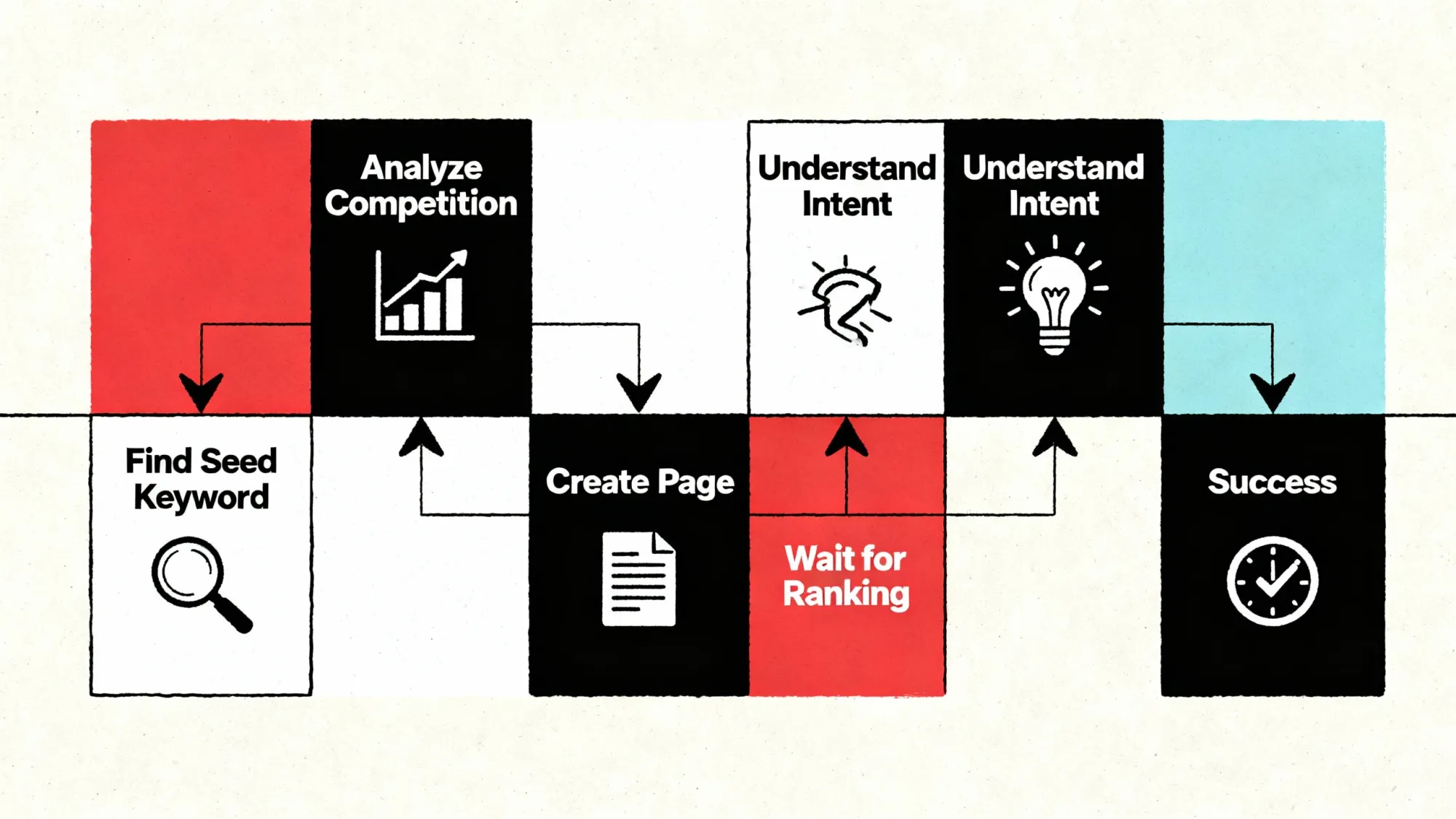
Figure 5: A complete SEO keyword practical process from the bad time simulator case - 6 key steps from keyword research to successful ranking
Step 2: Analyze the Term
Search “bad time simulator,” and you find:
- The #1 result is a github.io subdomain—a strong signal of lower competition.
- Similarweb shows the GitHub subdomain had 9.32 million visits in the past 12 months.
- Google Ads Keyword Planner estimates 550,000 monthly searches (~18,000/day).
- Google Trends shows stable interest over 10 years—long lifecycle.
Step 3: Understand User Intent
Open the top results—they’re all playable game pages. Intent is crystal clear: users want to play immediately.
Ask GPT: “What do users want when they search ‘bad time simulator’?” It explains it’s an Undertale boss fight—fans want to challenge it online.
Step 4: Confirm Feasibility
You find the top GitHub page is open-source—code hosted at github.com/jcw87. This means you can:
- Deploy the open-source code to host the game, or
- Build a similar playable experience yourself.
Step 5: Build the Page
You register a standalone domain, e.g., badtimesimulator.com, then:
- Deploy the game code.
- Optimize the title: “Bad Time Simulator – Play Sans Fight Online Free.”
- Add brief instructions.
- Optimize performance and mobile UX.
Step 6: Wait for Indexing and Ranking
After 1 week: Google indexes the page.After 2 weeks: rankings enter the top 50.After 1 month: top 20.After 3 months: top 10, bringing hundreds of daily visits.
Why did rankings climb?
- Competition isn’t high (#1 is a GitHub subdomain).
- Content perfectly matches intent (playable game).
- Independent domain can outperform subdomains for SEO.
- Great page experience (fast, mobile-friendly).
Case Takeaways
Key lessons:
- Target low-competition terms: GitHub subdomain at #1 suggests big sites aren’t dominating yet.
- Match intent precisely: if users want a game, give them a game—not an article.
- Choose long-lifecycle terms: still searched after 10 years—an “evergreen” asset.
- Prioritize user experience: not just content—speed and usability matter.
Common Beginner Pitfalls
After years in SEO, I’ve seen many beginners repeat the same mistakes. Avoid these:
- Mistake 1: Chasing big head terms immediatelyNew sites lack authority; high-competition terms are unrealistic. You might write 5,000 words and still not crack top 50—wasted effort.Fix: start with KD < 30 and 100–1,000 monthly searches. Build authority before scaling up.
- Mistake 2: Only looking at search volume, ignoring competitionA term with 10,000 searches might have KD 80 and be dominated by giants. That’s a dead end.Fix: weigh volume and difficulty together. A term with 500 searches and KD 15 might be far more worthwhile than 5,000 searches with KD 60.
- Mistake 3: Turning every term into a blog postIf users want a tool, don’t give them an essay. If they want to buy, don’t deliver a tutorial.Fix: search the keyword, study page-one results, map intent, and choose the right page type.
- Mistake 4: Obsessing over keyword densityIt’s 2025—stuffing keywords is pointless and risky. Over-optimization can hurt rankings.Fix: write naturally. Include the primary term where it belongs—title, intro, subheadings—without forcing it.
- Mistake 5: Expecting massive traffic from one or two keywordsYou hit a ceiling quickly. You need dozens or hundreds of targeted pages for stable traffic.Fix: SEO is a long game. Publish 2–3 focused pieces weekly. After six months, you’ll see results.
- Mistake 6: Publishing and forgettingAlgorithms and user needs evolve. A year-old article may be outdated.Fix: review top performers every few months—update data, add fresh insights, fix stale content.
- Mistake 7: Being too impatientQuitting after a month without big results. SEO typically takes 3–6 months to show traction.Fix: treat it as a long-term investment. Content you build today can ramp at 3 months and still deliver a year later.
Final Recap
As we conclude this article, let's summarize the key takeaways.
Finding Keywords
Use all eight methods: Google autocomplete, related searches, competitor analysis, site search, GSC opportunity mining, keyword expansion tools, question-based discovery, and forums/community analysis.
Combine them: use methods 1–2 for seeds, method 6 for expansion, then method 3 to validate against competitors.
Selecting Keywords
Evaluate with four dimensions:
- Traffic potential: look beyond raw volume—consider real traffic.
- Competition: beginners focus on KD < 30.
- Commercial value: conversion beats volume.
- Technical feasibility: only choose terms you can execute well.
Beginner’s formula: monthly volume 100–1,000 + KD < 30 + you can deliver quality = ideal starter keywords.
Search Intent
Live by this: give users what they want, in the format they expect.
- Want tools → build tool pages.
- Want information → write content pages.
- Want products → build product pages.
- Want files → provide download/preview.Stop defaulting to blog posts.
Tools
Starting out: free (GSC + Keyword Planner + Trends).Intermediate: add Ubersuggest ($12/month).Serious: upgrade to Ahrefs ($99/month) or Semrush ($129.95/month).
Closing Thoughts
A keyword strategy isn’t a mystical art—it’s a learnable, trainable, repeatable method. You don’t need talent; you need patience and consistency.
Every keyword page you publish today can become a durable traffic asset. Three months, six months, even years later—it can still work for you. That’s the beauty of SEO.
Start now. Open Google, type your first seed keyword, and see what appears. Your first 100 daily visits aren’t far away.
